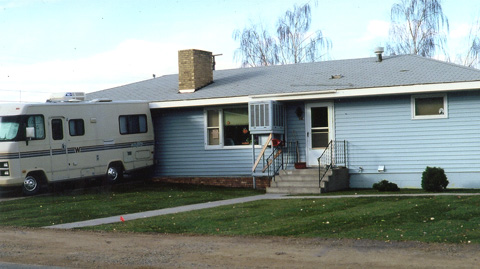|
East Helena
Superfund Site 
This three
photos on this page show the yard replacement
program that took place in East Helena to
remove soils that had been contaminated with
lead (also arsenic and cadmium). Mistakes of the past . . .
For
more than 100 years emissions from the
ASARCO Lead Smelter caused lead to be
deposited in the soils of East Helena. Microscopic lead particles were released from the tall stacks that stood on the smelter property until 2009. At the smelter, which closed in the late 1990s, tall stacks were used to put the pollution higher into the atmosphere where winds would carry it away and spread it out more. Unfortunately, a significant amount of lead ended up falling in the community of East Helena where it became part of the soil. As children played they may have inhaled some of the dust (including lead particles). Some of the lead would dissolve in the moisture in their lungs where it would be absorbed into their blood.
In 1984 East Helena was added to the EPA's (Environmental Protection Agency)
Superfund Priorities List. Superfund sites are
places that must be cleaned up because they
pose a risk to human health and/or the
environment.
Lead in the bodies of children . . .
Testing in 1975 indicated that children in
East Helena had elevated levels of lead in
their blood as result of inhaling dust from
lead-contaminated soils. During the clean-up,
which took place mostly in the 1990s, soil from
over 700 yards was replaced. The soil
replacement program continued to take place
as children moved into houses where soils were
contaminated. Above Right: First, the soil was removed
to a depth of about 6 inches. Below Left: New topsoil was brought in. Below Right: Finally, sod was placed on top of the new soil.  
Watch the stacks come down. (YouTube Video 2:51)
Terms: Superfund Site, smelting
| 







